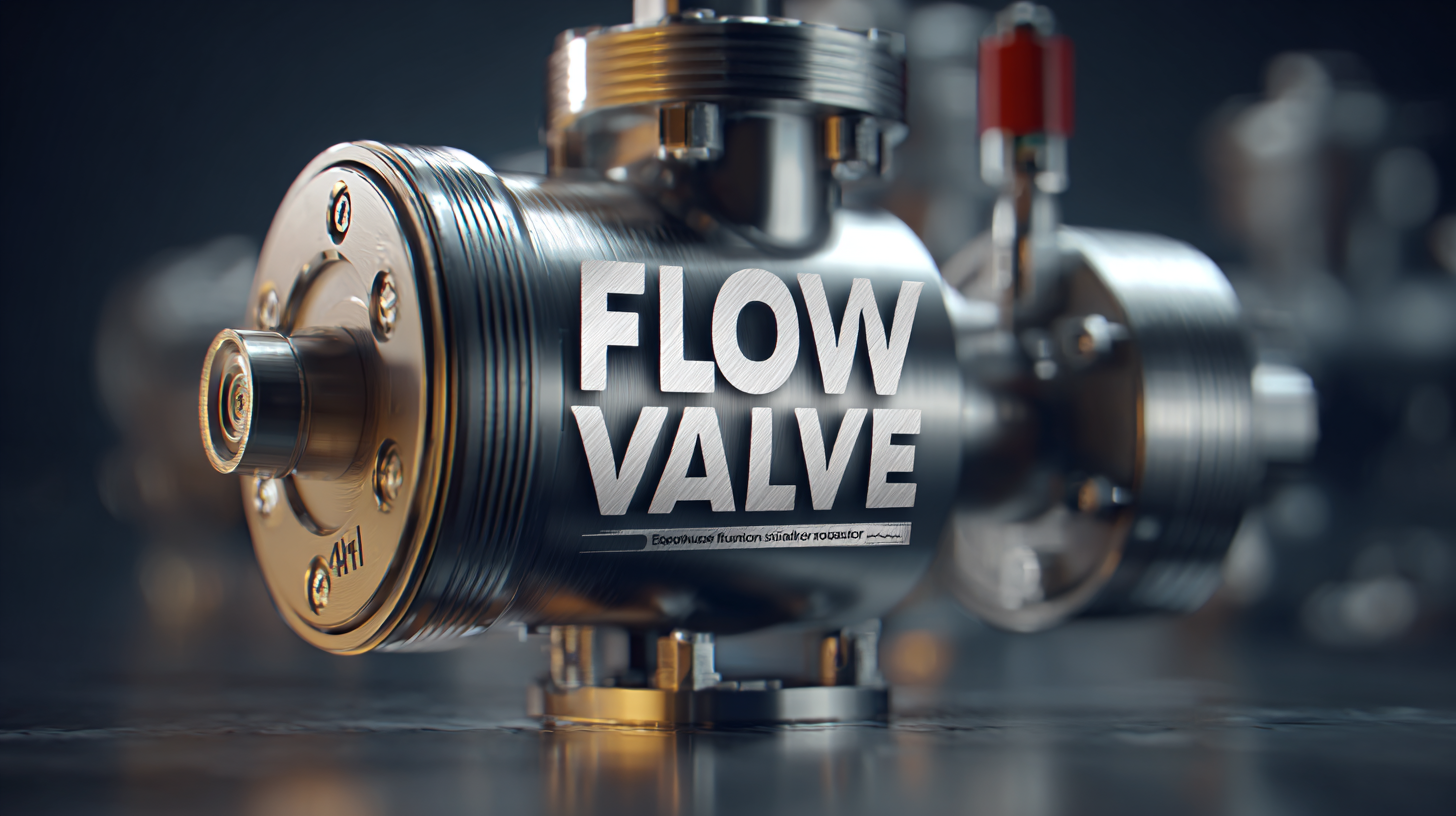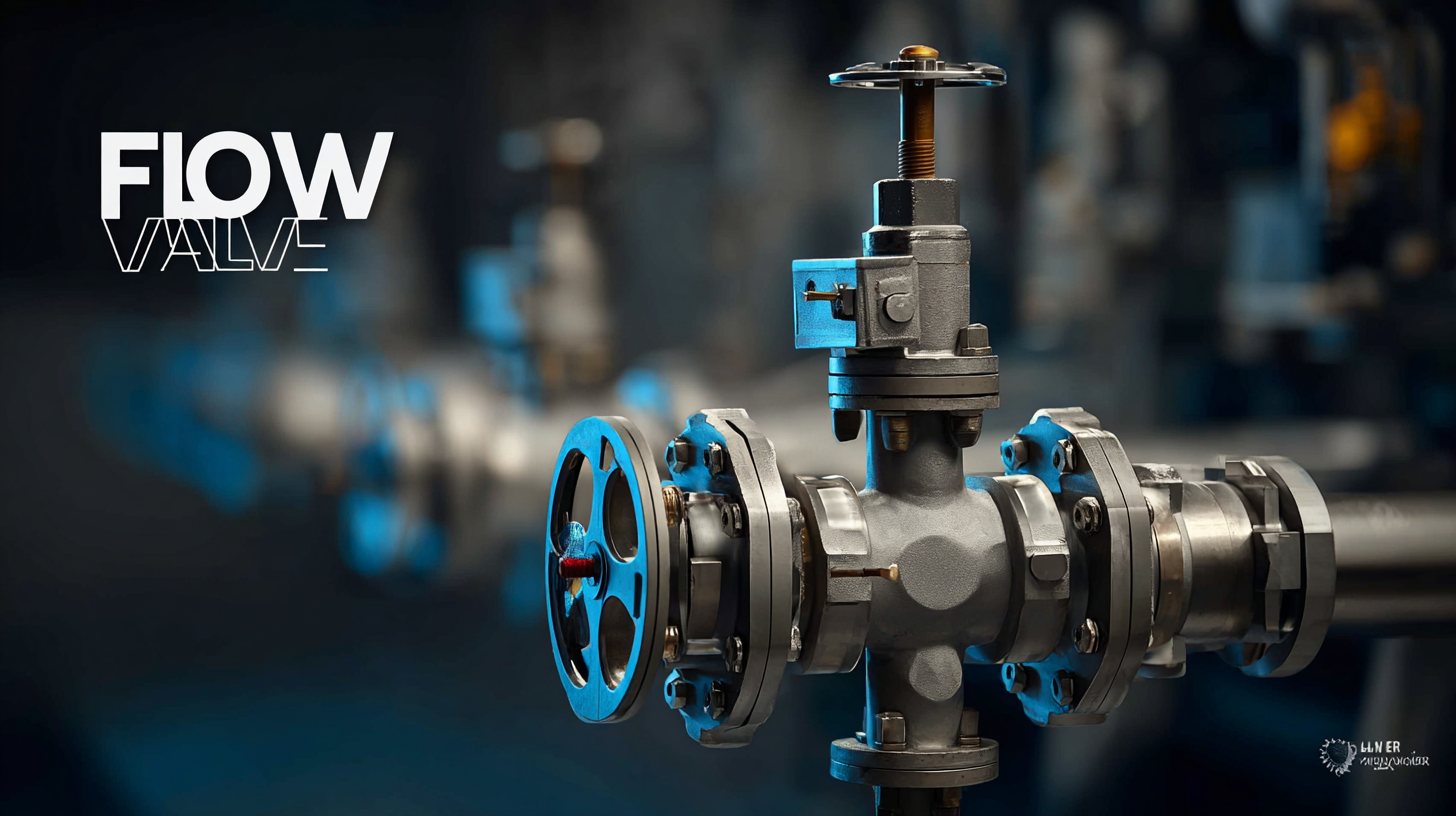In recent years, the importance of Flow Valves in industrial applications has become increasingly evident, as they play a critical role in managing fluid dynamics across various processes. According to a report from MarketsandMarkets, the global valve market is projected to reach $100 billion by 2026, highlighting the significant investment and innovation dedicated to this sector. With the growing emphasis on efficiency and sustainability, understanding the industry standards for Flow Valve technology has never been more crucial. Manufacturers are continually adapting to meet stringent performance criteria, ensuring that their products can withstand operational pressures while promoting energy savings. This blog will explore the latest developments in Flow Valve technology, offering a comparative analysis of different types and their impact on overall system performance. By leveraging industry data, we aim to provide insights that can help professionals make informed decisions when selecting Flow Valves for their specific applications.

As we look forward to 2025, the flow valve technology sector is poised for transformative changes, driven by innovations and adherence to industry standards. According to a recent report by MarketsandMarkets, the global flow control market is expected to reach $70 billion by 2025, with a robust compound annual growth rate (CAGR) of 6.7% from 2020. This surge is attributed to advancements in materials science, automation, and smart technology integration, allowing for enhanced precision and energy efficiency.
Current trends indicate a significant shift towards IoT-enabled flow valves, which offer real-time monitoring and data analytics capabilities. A study by Research and Markets highlights that the adoption of smart valves could improve operational efficiency by over 30% in various industrial applications.
Furthermore, the increasing focus on sustainability is pushing manufacturers to develop eco-friendly valve materials and designs that comply with rigorous environmental regulations, signifying a broader commitment to sustainable manufacturing practices within the industry. The advancing landscape of flow valve technology promises not only improved operational performance but also a substantial reduction in both energy consumption and carbon footprints, making it a critical area of focus for businesses aiming to enhance their competitive edge.
As we move closer to 2025, the landscape of flow valve technology is being increasingly shaped by rigorous industry standards that prioritize both performance and safety. Key guidelines set forth by organizations such as the International Organization for Standardization (ISO) and the American National Standards Institute (ANSI) are expected to play a crucial role in establishing benchmarks for flow valve efficiency. These standards not only influence the design and manufacturing processes but also ensure that flow valves maintain optimal performance under varying operational conditions.

One major area of focus is the development of materials that enhance durability and reduce wear over time. By adhering to updated industry standards, manufacturers are committed to utilizing advanced materials and innovative designs that extend the life cycle of flow valves. Furthermore, the implementation of these standards encourages the adoption of smart technologies, enabling real-time monitoring and data collection that help identify potential issues before they escalate. As we look forward to 2025, it's clear that these key industry standards will fundamentally enhance the effectiveness and reliability of flow valves in various applications, ultimately driving better performance across sectors.
In the realm of flow valve technology, innovative materials and designs are poised to redefine industry standards by 2025. The push for improved efficiency and sustainability is driving manufacturers to explore advanced materials that offer enhanced durability and reduced weight. For instance, the incorporation of composite materials and smart alloys ensures that flow valves maintain optimal performance under extreme conditions while minimizing maintenance costs. These breakthroughs not only extend the lifespan of valves but also improve their operational efficiency, which is critical in sectors like oil and gas, water management, and chemical processing.
As we move toward 2025, the design of flow valves is also evolving to meet the demands of modern applications. The integration of smart technology allows for real-time monitoring and automatic adjustments, optimizing flow rates and reducing energy consumption. Furthermore, modular designs are gaining traction, enabling easier upgrades and maintenance.
Such innovations represent a significant shift in how flow valves function and interact with surrounding systems, ultimately enhancing overall performance and sustainability in various industrial processes. The combination of these cutting-edge materials and designs heralds a new era in flow valve technology, promising not only better efficiency but also a reduced environmental footprint.
Choosing the right flow valve technology is critical for achieving optimal performance in various industrial applications. The first step in making an informed selection is understanding the specific requirements of your system, including pressure, temperature, and flow rate. Different technologies, such as globe valves, ball valves, and butterfly valves, offer distinct advantages depending on these parameters. For instance, ball valves are preferred for their tight sealing and durability, making them ideal for on-off control, while globe valves excel in throttling applications where precise flow regulation is necessary.
In addition to operational criteria, it’s essential to consider material compatibility and the application environment. For corrosive substances, materials such as stainless steel or specialized alloys may be required to ensure longevity and prevent failure. Furthermore, technology advancements, such as electronic and smart valves, should also be evaluated for their ability to enhance automation and control, ultimately contributing to system efficiency. By thoroughly assessing these factors, you can select a flow valve technology that not only meets the immediate operational demands but also aligns with broader performance goals, ensuring reliability and cost-effectiveness in the long run.

The flow valve industry is currently at a critical juncture as it faces multiple challenges tied to evolving standards and regulations. According to a report from the Global Valve Market Research Institute, the demand for flow valves is expected to grow at a CAGR of 5.4% between 2023 and 2030, but achieving compliance with new industry standards remains a significant hurdle. Many manufacturers struggle to align their products with the latest regulations introduced by organizations such as the American National Standards Institute (ANSI) and the International Organization for Standardization (ISO). This misalignment can lead to increased production costs and delays in bringing new technologies to market.
In addition to compliance complexities, the industry must also adapt to rapid advancements in technology. The integration of IoT and smart technologies is revolutionizing flow valve applications, as reported by TechMarket Insights, indicating that smart valves could represent up to 30% of the overall market by 2028. Consequently, companies must invest not only in upgrading their manufacturing processes but also in training personnel to handle new technologies. Addressing these challenges effectively will be essential in maintaining competitive advantage and meeting the rising expectations of safety and efficiency in flow valve performance.
This bar chart illustrates the performance differences between best flow valve technology and standard flow valve technology across key metrics, including pressure loss, flow rate, energy efficiency, and maintenance frequency. The data highlights the superior performance of the best flow valve technology and outlines the challenges and areas for improvement in the industry.
